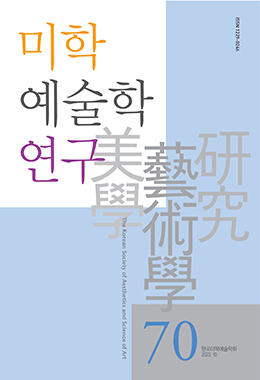비판적 실재론, 구성주의 과학사회학, 과학기술 정치학, 신유물론 등은 과학기술과 문화 사이의 연속성을 규명하려 분투한다. 그것들은 과학적 지식 자체를 다루는가 하면, 인간주의적 지식과 구별되는 존재 자체를 문제 삼는다. 과학과 기술의 불가피한 관계에서 과학기술 대상을 행위 차원에서 다루는가 하면, 그것을 권력, 욕망, 자본에 얽힌 실천 문제로 본다. 요컨대 현대 과학기술은 자본주의 바깥에서 작동하지 않으며, 문화와의 관계 역시 그렇게 구성된다. 본 논문은 소비자본주의 형성 시기인 1930년대 말의 미국에서 있었던 몇 가지 사건에 주목한다. ≪뉴욕 세계박람회≫(1939-1940), 웨스팅하우스의 <미들턴 가족>(1939), 그리고 로봇 일렉트로(1937)가 그것이다. 경제 대공황 시기를 통과하고 있던 미국에서, 거대기업은 소비 기반의 자본주의 체계로 이행하려 했던 반면에 소비 시장은 아직 미성숙했으므로 소비자본주의를 향한 전략이 추진되었다. ≪뉴욕 세계박람회≫는 소비의 미래 이미지를 과학기술과 결합했는데, 이것은 소비를 문화 자본의 형태로 가공하는 것이자 과학기술을 소비의 문화 자본으로 재생산하는 장치였다. 웨스팅하우스의 영화 <미들턴 가족>과 로봇 일렉트로는 프로퍼갠더로 작동한 이런 장치들에 속했다. 특히 그 로봇은 미래에 최첨단 상품의 이미지를 재현한 스펙터클로 기능했으며, 남성중심주의, 소비 주체로서 여성을 코드화했다. 이것들을 1930년대 ‘과학기술 극장’이라 부를 수 있다.
Critical realism, constructivist sociology of science, science and technology politics, and new materialism all strive to elucidate the continuity between science and technology and culture. These theoretical perspectives grapple with scientific knowledge itself as well as its existence distinct from anthropocentric knowledge. They argue that contemporary science and technology do not operate outside of capitalism and that their relationship with culture is similarly constructed. With this theoretical background, the article focuses on several events that occurred in late 1930s in the United States, a time when consumer capitalism was taking shape. The New York World’s Fair (1939-40), Westinghouse’s film The Middleton Family (1939), and the robot Elektro (1937) are the subjects of investigation. The New York World’s Fair combined an image of the future of consumption with science and technology. It served as a device to process consumption into a form of cultural capital and to reproduce science and technology as cultural capital. Westinghouse’s film and the robot were part of such devices operating as propaganda. In particular, the robot functioned as a spectacle that reproduced an image of cutting-edge products of the future and encoded the male-centeredness of technology and women as consumers. These can be referred to as the “theater of science and technology” of the 1930s.


